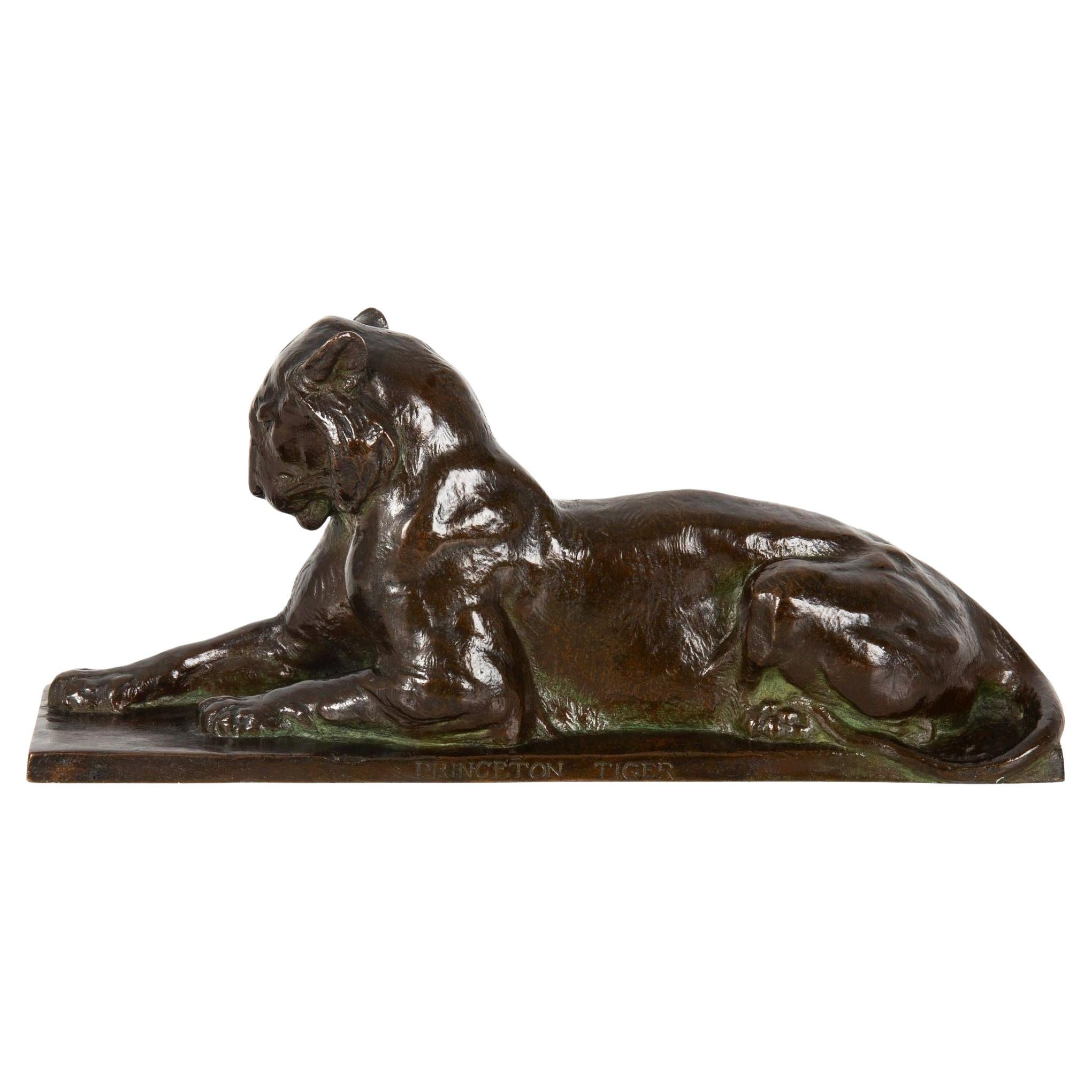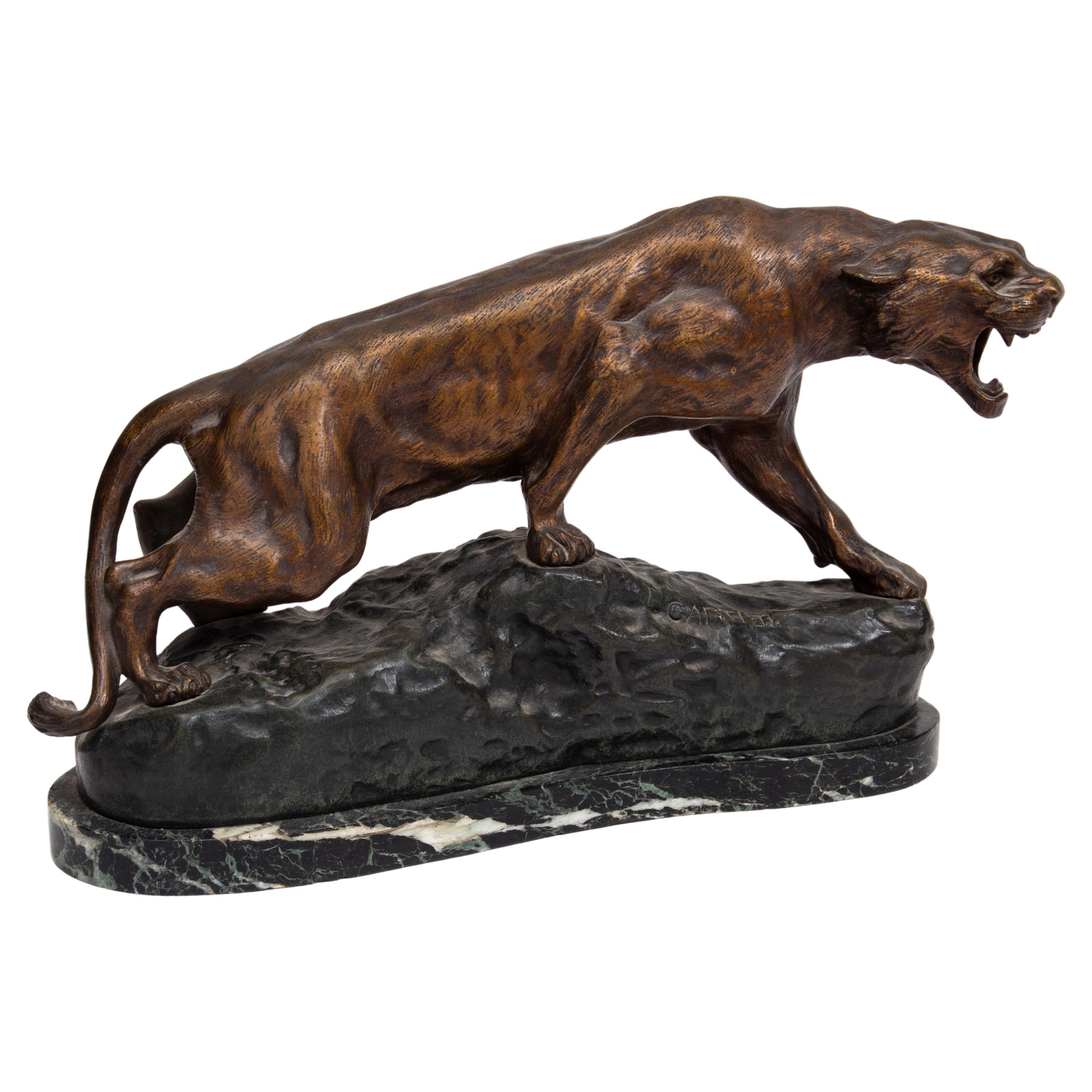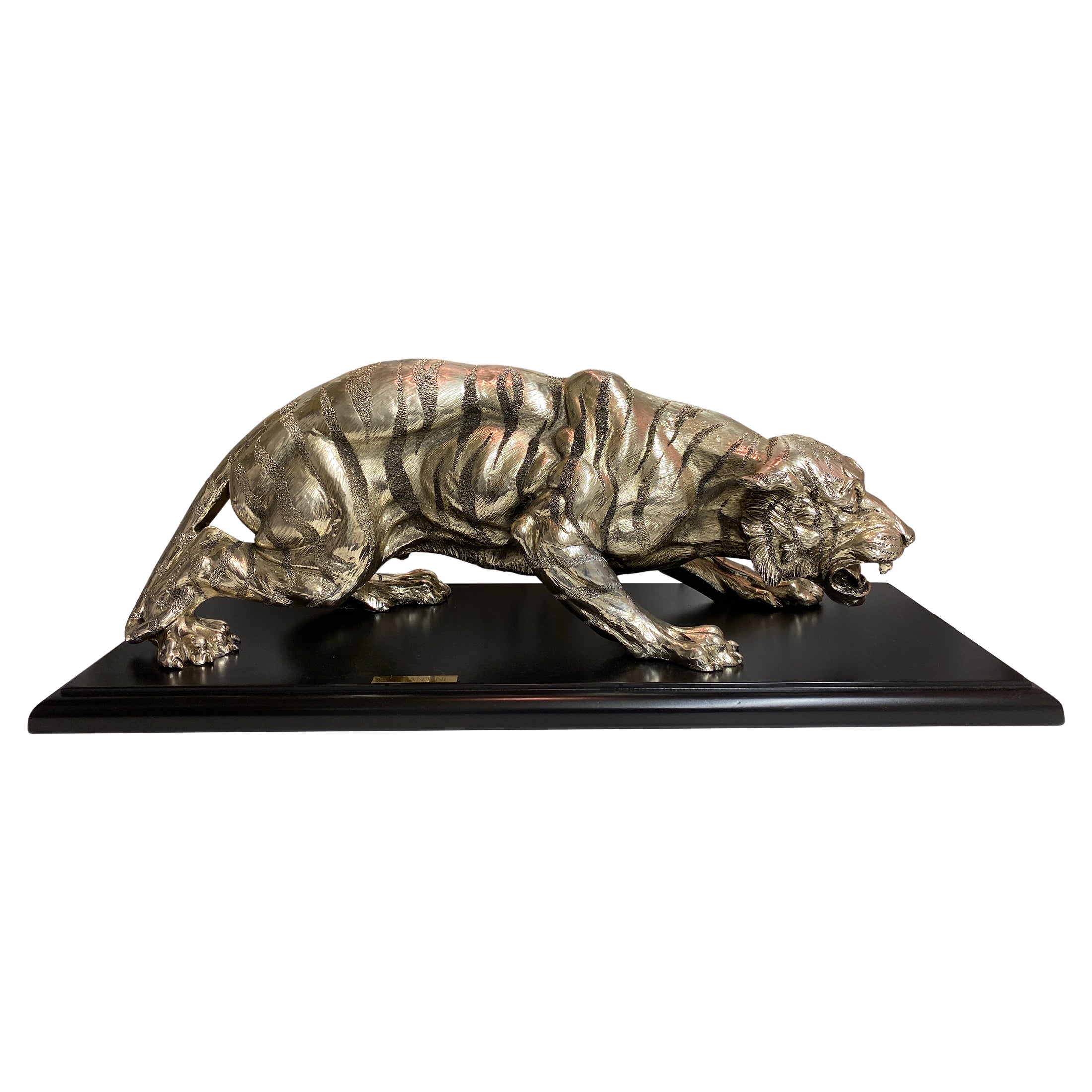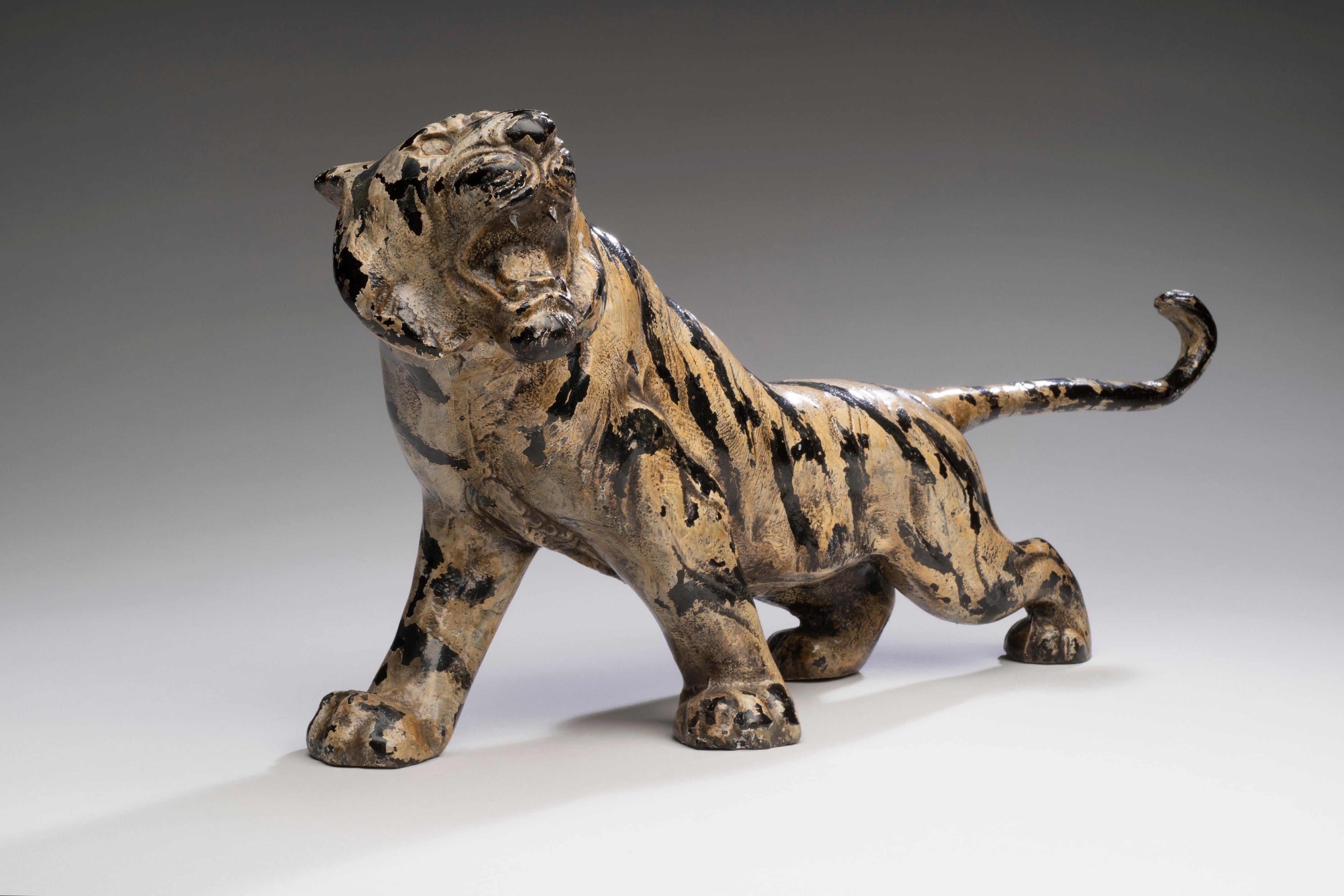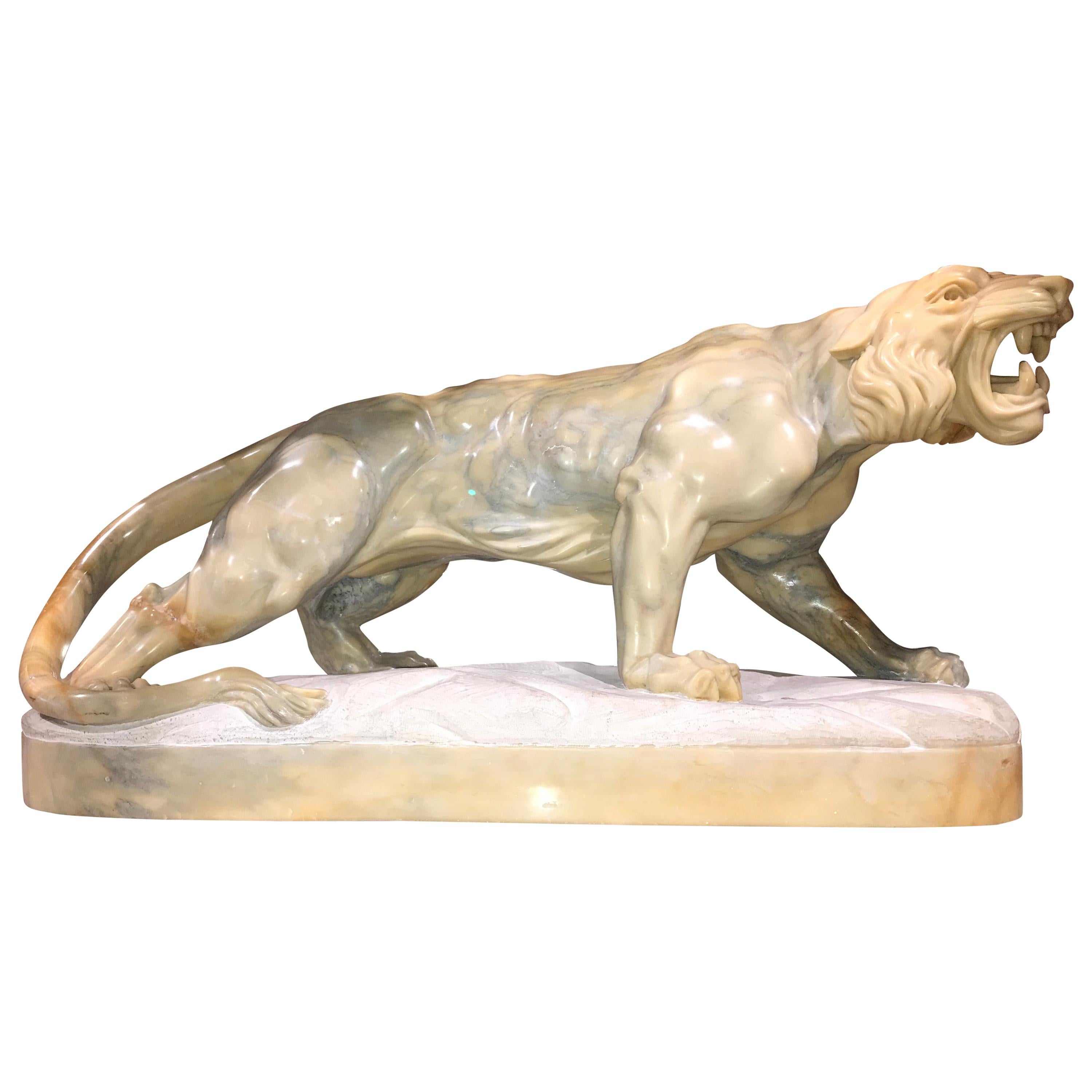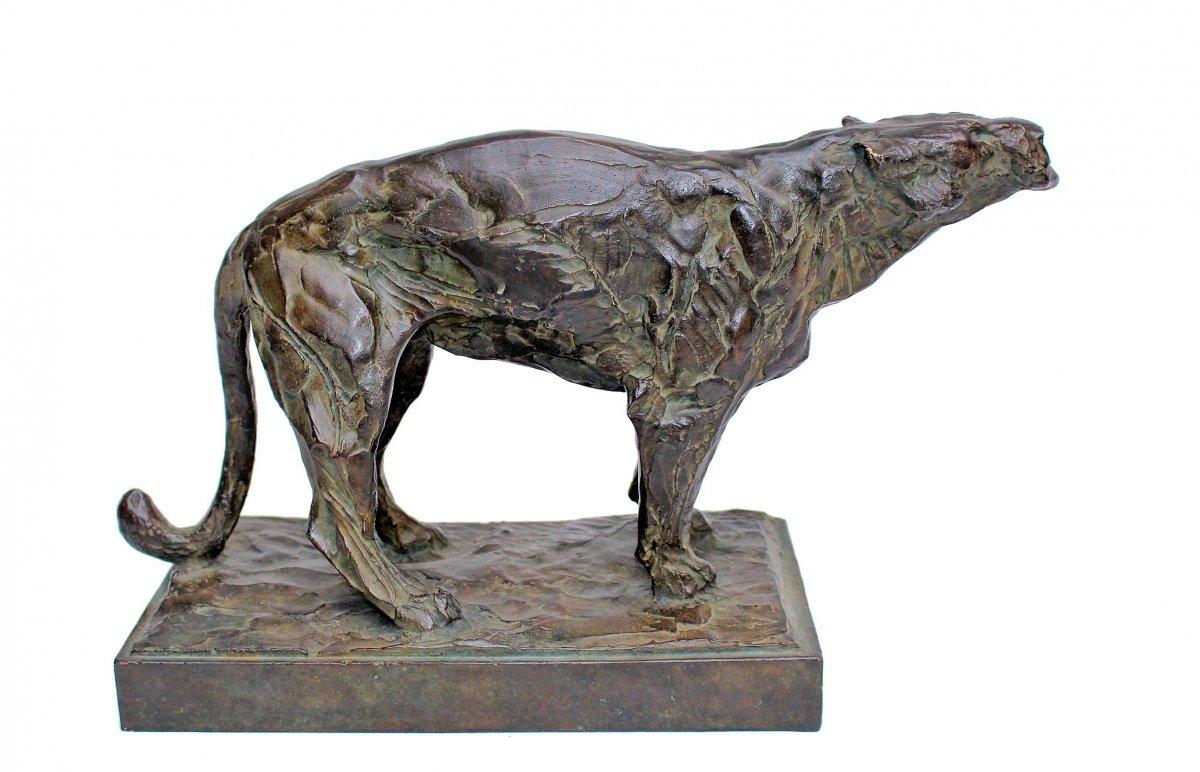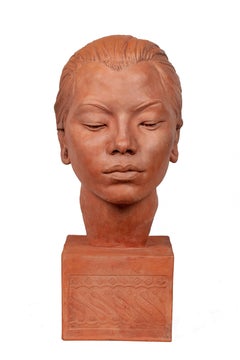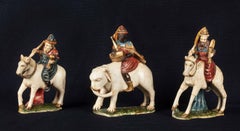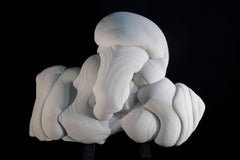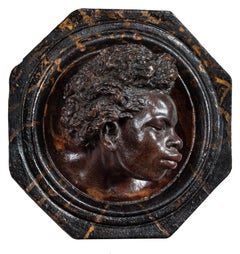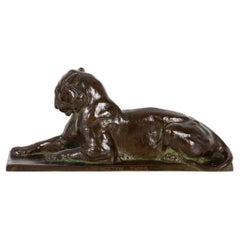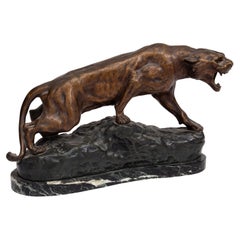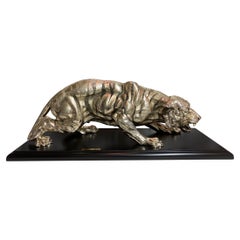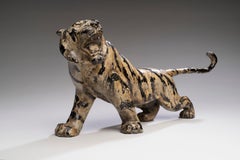Articles similaires à Le tigre de Princeton
Vous voulez plus d'images ou de vidéos ?
Demander au vendeur plus d'images ou de vidéos
1 sur 7
Charles R. Knight Le tigre de Princeton1943
1943
35 254,79 €
À propos de cet article
Provenance: The artist; thence by descent to his granddaughter:
Rhoda Knight Kalt; from whom acquired by:
Private Collection, Pennsylvania, 1995–2025.
Literature: Richard Milner, Charles R. Knight: The Artist Who Saw Through Time, New York, 2012, p. 63.
Signed and dated at the rear: CHAS. R. KNIGHT / 43
Charles R. Knight holds a unique place among American painters. As much a zoologist as an artist, he is responsible for the authoritative and dramatic images of our ancient past that have inspired generations of students and adults. Beginning in the 1890s, Knight utilized his extensive knowledge of animal anatomy and his ability to capture motion and behavior of living animals, both in zoos and in the wild, in a collaborative effort with paleontologists to visualize and to illustrate antecedents of current species, pre-historic creatures and early man. Knight’s great murals in this genre are to be found in America’s major natural history museums: the Field Museum in Chicago, the Natural History Museum in Los Angeles, and the American Museum of Natural History in New York City.
Knight’s interest and involvement with wild cats was life-long. Sheets of studies record the artist’s fascination with their habits, activities, and behavior—particularly of tigers, which seem to have held a special place in the artist’s life. Paintings and watercolors of tigers included many varieties, both extant and extinct (such as his celebrated depictions of Smilodon).
Knight had for many years dreamed of sculpting a large bronze statue of a tiger to be placed outside of Princeton University’s football stadium to honor the University’s team, the Princeton Tigers. He sculpted Leaping Tiger (Fig. 1) in 1925 with the hope that funds could be raised to place a bronze version of “heroic size,” in the artist’s words, outside of Stephen Palmer Stadium, which had been donated by Edgar Palmer of the Class of 1903. However, despite the support of Knight’s great sponsor and patron, Henry Fairfield Osborn (1857–1935), the project never materialized.
In the 1930s Palmer undertook the commercial redevelopment of the center of the town of Princeton in an area along Nassau Street directly across from the University campus. Colonial Revival buildings were constructed around a public square populated with shops, restaurants, residences, and, prominently, a new Post Office and the rebuilt Nassau Inn.
After Edgar Palmer’s death in 1943 his family commissioned Knight to sculpt a monumental tiger to be placed at the center of Palmer Square, both as an homage to the University’s mascot and as a memorial to Palmer. Unlike the fierce adversary of the 1925 tiger, the Palmer Square tiger would depict the cat in alert repose, in an attitude similar to that of Knight’s 1923 painting The River of Time (Fig. 2), which Osborn had earlier commissioned to decorate the old Nassau Inn.
The present work is the original plaster maquette for the Palmer Square Tiger. First modelled in clay, then cast by the artist in plaster detailed by him, the tiger was then enlarged approximately three times at the Roman Bronze foundry in New York. At over eight feet in length, the finished bronze was dedicated in 1944.
Since then the sculpture has become both a landmark of the town and a symbol of the University—one that resonates with students, alumni, and visitors alike. Writing to Charles R. Knight some years after the sculpture’s dedication, Palmer’s son-in-law commented:
“Some works of art deteriorate with age and take on the appearance of obsolescence—not so however with the Knight Tiger which adorns Palmer Square at Princeton, New Jersey… I had the pleasure of spending yesterday in Princeton, and of… observing it carefully after these years have gone by. I just wanted you to know that it has taken on a dignity which is really inspiring to the people of Princeton, and, of course to the students it is an emblem symbolic of energy, courage, perseverance, and success, not alone in athletics, but in all activities.”
A concrete version of the Palmer Square Tiger, said to have been used in the casting process, descended in Palmer’s family as a garden ornament. In 1983 it was given to the University, restored, and placed in the lobby of Jadwin Gymnasium at Princeton.
À propos du vendeur
5,0
Vendeur reconnu
Ces vendeurs prestigieux sont des leaders du secteur. Ils représentent le summum en matière de qualité et de design.
Établi en 1997
Vendeur 1stDibs depuis 2012
22 ventes sur 1stDibs
Temps de réponse habituel : 16 heures
- ExpéditionRecherche du devis...Expédition depuis : New York, NY
- Politique des retours
Certaines parties de cette page ont été traduites automatiquement. 1stDibs ne garantit pas l'exactitude des traductions. L'anglais est la langue par défaut de ce site web.
Garantie d'authenticité
Bien qu'il soit peu probable que la situation se présente, dans le cas où vous rencontreriez un problème d'authenticité d'un article, contactez-nous dans un délai d'un an pour obtenir un remboursement intégral. DétailsGarantie de remboursement
Si votre article n'est pas conforme à la description, est endommagé pendant le transport ou ne vous est pas livré, contactez-nous sous 7 jours pour obtenir un remboursement intégral. DétailsAnnulation sous 24 heures
Vous disposez d'un délai de 24 heures pour annuler votre achat sans motif.Des vendeurs professionnels agréés
Nos vendeurs de renommée mondiale doivent respecter des normes strictes en matière de service et de qualité, afin de préserver l'intégrité de nos fiches produit.Garantie d'alignement des prix
Si vous constatez qu'un autre vendeur a mis en vente le même article à un prix inférieur sur un autre site, nous nous alignerons sur ce prix.Livraison en toute confiance à l'international
Notre réseau de transporteurs de premier ordre propose des options d'expédition spécialisées dans le monde entier, y compris des livraisons personnalisées.Plus d'articles de ce vendeur
Tout afficherPortrait de Ni-Polog
Signé, daté et inscrit au verso :
Malvina Hoffman/ Den Pasar/ "Nipolog"-/ © 1932/ Bali
Provenance :
L'artiste ; sa succession.
La littérature :
Malvina Hoffman, Heads and Tails, ...
Catégorie
années 1930, Réalisme, Sculptures
Matériaux
Terre cuite
Les trois mages
Provenance : Collectional, Espagne.
Connu sous le nom d'albâtre péruvien pour sa translucidité et sa facilité de mise en œuvre, Piedra de Huamanga est un matériau très prisé proven...
Catégorie
Fin du XVIIIe siècle, Sculptures - Figuratif
Matériaux
Albâtre
Premier voyage
Provenance : Sables de Fontainbleau, Seine-et-Marne, France
Les "gogottes" sont des créations naturelles formées à partir de sables déposés dans le nord de la France à l'époque de l...
Catégorie
15e siècle et avant, Naturalisme, Sculptures - Abstrait
Matériaux
Grès
Tête d'un jeune homme africain
Provenance : Collectional, Espagne.
Cette sculpture intrigante et énigmatique représente la tête d'un jeune homme africain émergeant d'une ouverture circulaire ou d'une fenêtre. On ...
Catégorie
Début des années 1800, Sculptures - Figuratif
Matériaux
Terre cuite
L'infant Saint Jean le Baptiste avec un agneau
Provenance :
James Byrnes, Los Angeles (1917-2011)
Giusto Le Court est né Josse ou Justus de Corte dans la ville flamande d'Ypres. Son père Jean était sculpteur et on peut supposer ...
Catégorie
17ème siècle, Renaissance, Sculptures
Matériaux
Marbre
L'archange Gabriel
Par Cristobal de Villalpando
Provenance : Collectional, Cranston, Rhode Island (dans les années 1950 ?); par descendance familiale jusqu'à la vente à :
Bill Spicer Auction, North Kingstown, Rhode Island, 26 jan...
Catégorie
Fin du XVIIe siècle, Maîtres anciens, Peintures - Figuratif
Matériaux
Toile, Huile
Suggestions
Rare sculpture américaine du tigre Princeton par Alexander Phimister Proctor
Par Gorham CO.
ALEXANDER PHIMISTER PROCTOR
Américain, 1860-1950
"Tigre de Princeton" (1910)
Bronze patiné brun foncé et automnal signée en fonte "AP PROCTOR 1912", "GORHAM CO FOUNDERS 0454 # 88"...
Catégorie
20ième siècle, Américain, Sculptures - Animaux
Matériaux
Bronze
Thomas François Cartier (1879-1943)
Par Thomas Francois-Cartier
Thomas François Cartier, né le 3 janvier 1879 à Marseille et décédé le 27 décembre 1943, est un sculpteur français célèbre pour ses représentations magistrales d'animaux, en particul...
Catégorie
Vintage, années 1920, Art déco, Sculptures - Animaux
Matériaux
Marbre, Bronze
4 560 € Prix de vente
20 % de remise
Sculpture de tigre du Bengale
Par Anthony Redmile London
Sculpture de Santini représentant un tigre du Bengale, réalisée en composite moulé électroplaqué argenté et montée sur une base en bois.
Catégorie
années 1990, italien, Hollywood Regency, Sculptures - Animaux
Matériaux
Composition
Tigre en métal moulé peint circa 1900
Tigre en métal coulé peint
École continentale, vers 1900
8.75 x 19.5 pouces
Ex. Collectional Interior Designer Joseph Cicio
Né et élevé à Brooklyn, New York, Joseph Cicio a suivi d...
Catégorie
Début du 20ème siècle, Académique, Sculptures - Figuratif
Matériaux
Métal
1 727 € Prix de vente
20 % de remise
Très belle figurine en albâtre sculptée d'un tigre
Très belle figure de tigre en albâtre sculpté
Dimensions :
D 10"
H 17"
W 33"
CW4544.
Catégorie
20ième siècle, Sculptures - Animaux
Matériaux
Albâtre
Le Lionisme rugissant
Modèle en bronze de qualité, datant du XXe siècle, représentant une lionne rugissante, réalisé par Alberic Collin (Belge, 1886-1962). Avant d'être co...
Catégorie
années 1930, Art déco, Sculptures - Figuratif
Matériaux
Bronze
